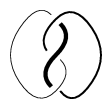Difference between revisions of "Fox-n-colouring"
m (→References: expand bibliodata) |
m (→References: expand bibliodata) |
||
| Line 14: | Line 14: | ||
<table> | <table> | ||
<TR><TD valign="top">[a1]</TD> <TD valign="top"> R.H. Crowell, R.H. Fox, "An introduction to knot theory" , Ginn (1963) {{ZBL|0126.39105}}. 4th corr. print. Graduate Texts in Mathematics '''57''', Springer (1977) ISBN 3-540-90272-4 {{ZBL|0362.55001}}. Repr. Dover (2008) ISBN 0-486-46894-1</TD></TR> | <TR><TD valign="top">[a1]</TD> <TD valign="top"> R.H. Crowell, R.H. Fox, "An introduction to knot theory" , Ginn (1963) {{ZBL|0126.39105}}. 4th corr. print. Graduate Texts in Mathematics '''57''', Springer (1977) ISBN 3-540-90272-4 {{ZBL|0362.55001}}. Repr. Dover (2008) ISBN 0-486-46894-1</TD></TR> | ||
| − | <TR><TD valign="top">[a2]</TD> <TD valign="top"> J. Przytycki, ''3-coloring and other elementary invariants of knots'', in "Knot Theory" (ed. V.F.R. Jones) Banach Center Publications '''42''' (1998) pp. 275–295 [http://eudml.org/doc/208812] {{ZBL|0904.57002}}</TD></TR> | + | <TR><TD valign="top">[a2]</TD> <TD valign="top"> J. Przytycki, ''3-coloring and other elementary invariants of knots'', in "Knot Theory" (ed. V.F.R. Jones) Banach Center Publications '''42''' (1998) pp. 275–295 [http://eudml.org/doc/208812 EUDML] {{ZBL|0904.57002}}</TD></TR> |
</table> | </table> | ||
{{TEX|done}} | {{TEX|done}} | ||
Revision as of 22:20, 30 December 2016
A colouring of a non-oriented link diagram (cf. also Knot and link diagrams), leading to an Abelian group invariant of links in $\mathbf{R}^3$ (cf. also Link). It was introduced by R.H. Fox around 1956 to visualize dihedral representations of the knot group [a1] (cf. also Knot and link groups). Using $3$-colourings is, probably, the simplest method of showing that the trefoil knot is non-trivial (see Fig.a1).
One says that a link (or tangle) diagram, $D$, is $n$-coloured if every arc is coloured by one of the numbers $0,\ldots,(n-1)$ in such a way that at each crossing the sum of the colours of the undercrossings is equal to twice the colour of the overcrossing modulo $n$. The set of $n$-colourings forms an Abelian group, denoted by $\text{Col}_n(D)$. This group can be interpreted using the first homology group (modulo $n$) of the double branched cover of $S^3$ with the link as the branched point set. The group of $3$-colourings is determined by the Jones polynomial (at $t=e^{2\pi i/6}$), and the group of $5$-colourings by the Kauffman polynomial (at $a=1$, $z = 2\cos(2\pi/5)$), [a2]. The $n$-moves preserve the group of $n$-colourings and $3$-moves lead to the Montesinos–Nakanishi conjecture (cf. Tangle move).

Figure: f130220a
The linear space of $p$-colourings of the boundary points of an $n$-tangle has a symplectic form (cf. also Symplectic structure), so that tangles correspond to Lagrangian subspaces (i.e. maximal totally degenerate subspaces) of the symplectic form.
The Alexander module is a generalization of the group of $n$-colourings.
References
| [a1] | R.H. Crowell, R.H. Fox, "An introduction to knot theory" , Ginn (1963) Zbl 0126.39105. 4th corr. print. Graduate Texts in Mathematics 57, Springer (1977) ISBN 3-540-90272-4 Zbl 0362.55001. Repr. Dover (2008) ISBN 0-486-46894-1 |
| [a2] | J. Przytycki, 3-coloring and other elementary invariants of knots, in "Knot Theory" (ed. V.F.R. Jones) Banach Center Publications 42 (1998) pp. 275–295 EUDML Zbl 0904.57002 |
Fox-n-colouring. Encyclopedia of Mathematics. URL: http://encyclopediaofmath.org/index.php?title=Fox-n-colouring&oldid=40114